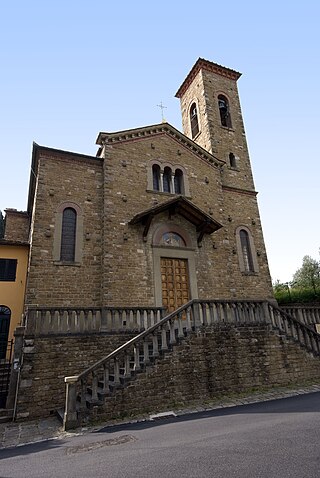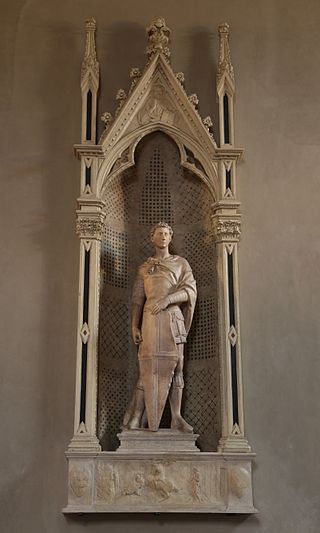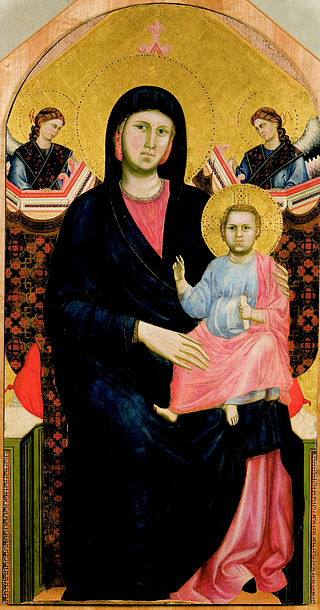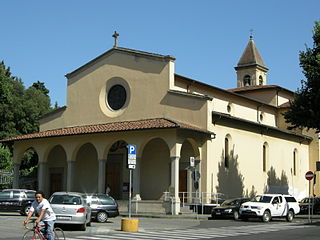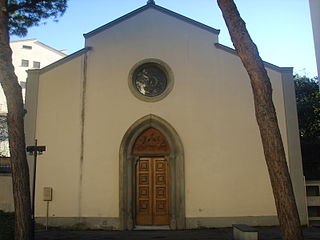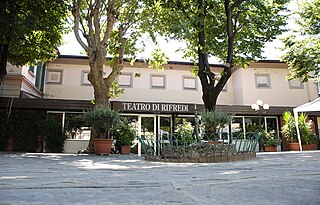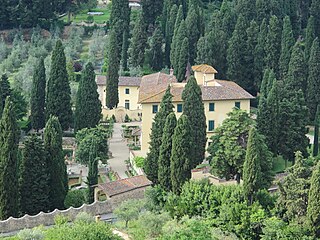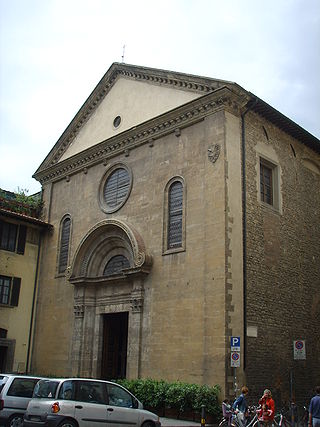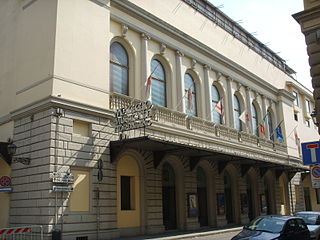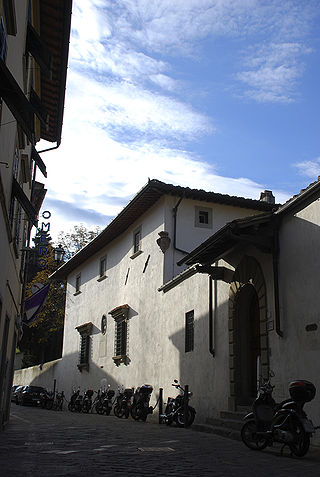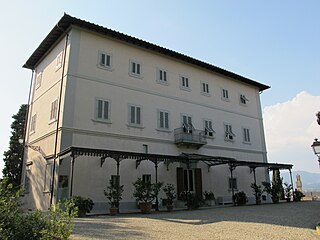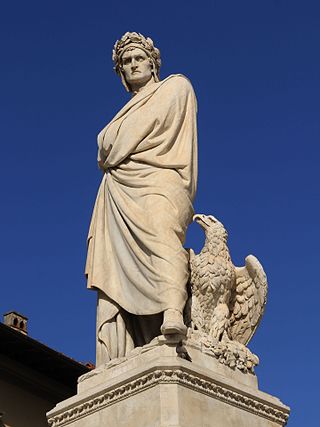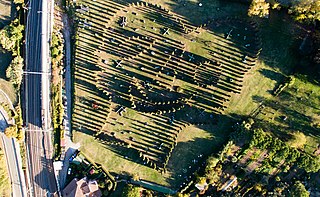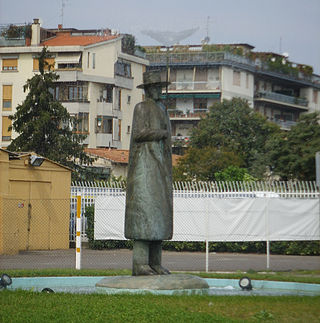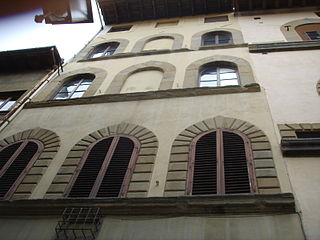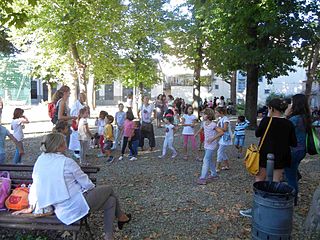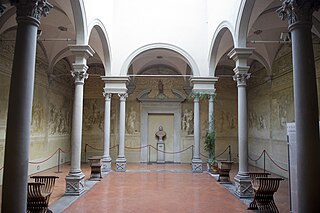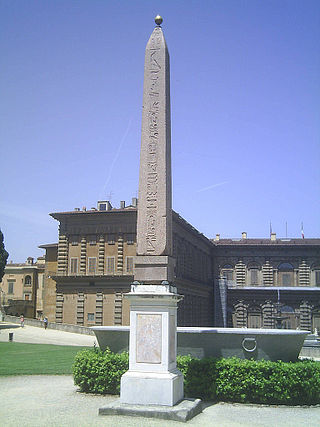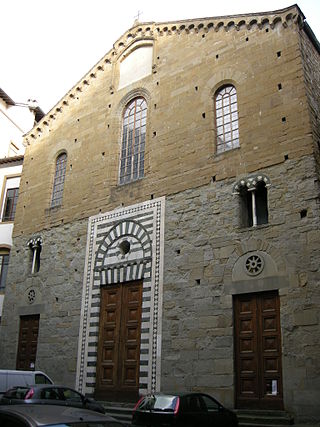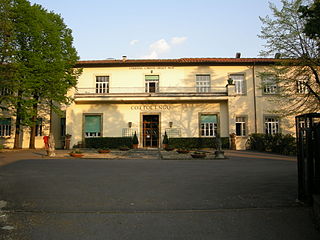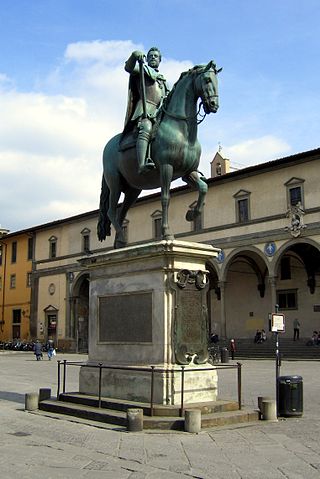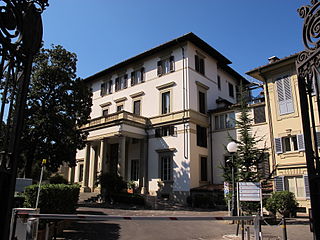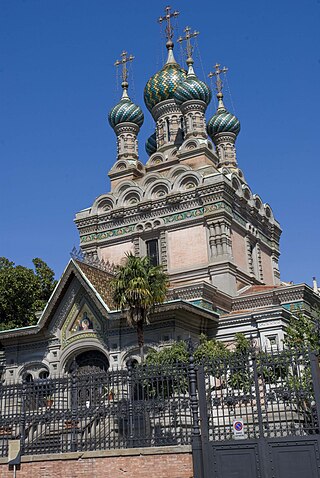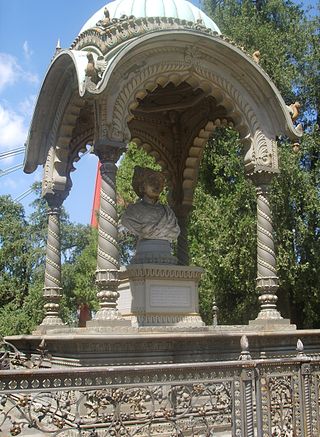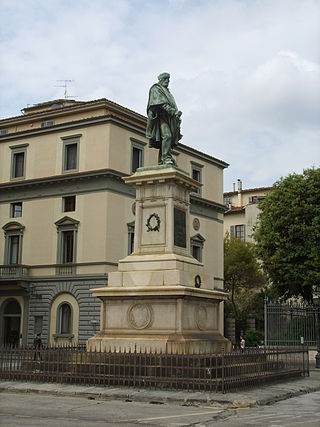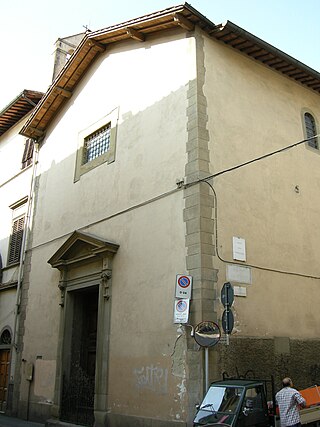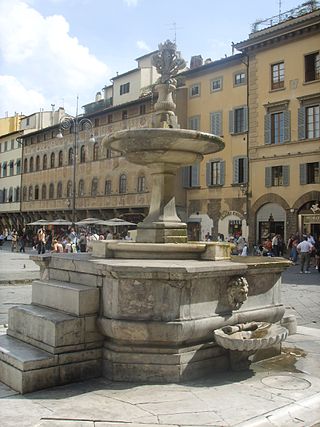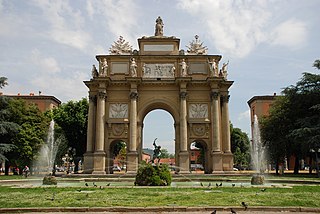100 Sights in Florence, Italy (with Map and Images)
Legend
Premium Sights
Book tickets, guided tours and activities in Florence.
Guided Free Walking Tours
Book free guided walking tours in Florence.
Welcome to your journey through the most beautiful sights in Florence, Italy! Whether you want to discover the city's historical treasures or experience its modern highlights, you'll find everything your heart desires here. Be inspired by our selection and plan your unforgettable adventure in Florence. Dive into the diversity of this fascinating city and discover everything it has to offer.
Sightseeing Tours in FlorenceActivities in FlorenceThe Stibbert Museum is located on via Frederick Stibbert on the hill of Montughi in Florence, Italy. The museum contains over 36,000 artifacts, including a vast collection of armour from Eastern and Western civilizations.
The Loggia del Bigallo is a late Gothic building in Florence, region of Tuscany, Italy. It stands at the corner of Piazza San Giovanni and via Calzaioli; tradition holds the site near the Baptistry of Florence was donated by a benefactor.
The Porta San Miniato is a city gate part of the circle of walls of Florence, and is located in Oltrarno, in the area of San Niccolò, between Via San Miniato and Via Monte alle Croci. The name derives from the fact that the road to the church of San Miniato al Monte starts from here.
San Niccolò Oltrarno is a Roman Catholic church located on Via San Niccolò in the district of the same name in Florence, region of Tuscany, Italy. The narrow district of Niccolò in Oltrarno is hemmed between the hills around San Miniato and the river.
The Medici Chapels are two chapels built between the 16th and 17th centuries as an extension to the Basilica of San Lorenzo, in the Italian city of Florence. They are the Sagrestia Nuova, designed by Michelangelo, and the larger Cappella dei Principi, a collaboration between the Medici family and architects. The purpose of the chapels was to celebrate the Medici family, patrons of the church and Grand Dukes of Tuscany.
Florence Cathedral, formally the Cathedral of Saint Mary of the Flower, is the cathedral of the Catholic Archdiocese of Florence. Commenced in 1296 in the Gothic style to a design of Arnolfo di Cambio and structurally completed by 1436 with the dome engineered by Filippo Brunelleschi; the basilica's exterior is faced with polychrome marble panels in various shades of green and pink, bordered by white, and features an elaborate 19th-century Gothic Revival (west) façade by Emilio De Fabris.
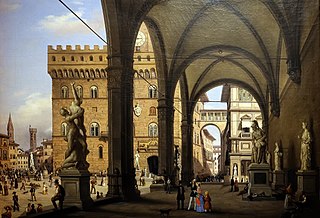
The Loggia dei Lanzi, also called the Loggia della Signoria, is a building on a corner of the Piazza della Signoria in Florence, Italy, adjoining the Uffizi Gallery. It consists of wide arches open to the street. The arches rest on clustered pilasters with Corinthian capitals. The wide arches appealed so much to the Florentines that Michelangelo proposed that they should be continued all around the Piazza della Signoria.
8. Anfiteatro
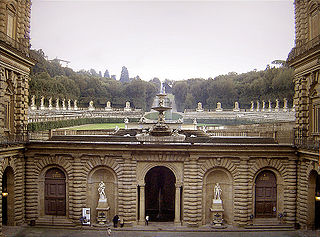
The Boboli Amphitheater is one of the main architectures of the Florentine Boboli Gardens in the Pitti Palace, which embellishes the main axis, centered on the rear façade of the palace. Used as a place for summer performances, it is the oldest court theater in Florence that has come down to us, after the loss of the Dogana theater and the Medici Theater.
9. Basilica di San Lorenzo
The Basilica di San Lorenzo is one of the largest churches of Florence, Italy, situated at the centre of the main market district of the city, and it is the burial place of all the principal members of the Medici family from Cosimo il Vecchio to Cosimo III. It is one of several churches that claim to be the oldest in Florence, having been consecrated in 393 AD, at which time it stood outside the city walls. For three hundred years it was the city's cathedral, before the official seat of the bishop was transferred to Santa Reparata.
10. Ognissanti
The chiesa di San Salvatore di Ognissanti, or more simply chiesa di Ognissanti, is a Franciscan church located on the piazza of the same name in central Florence, region of Tuscany, Italy. Founded by the lay order of the Umiliati, the church was dedicated to all the saints and martyrs, known and unknown.
11. Soka Gakkai
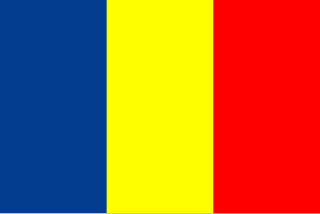
Soka Gakkai is a Japanese Buddhist religious movement based on the teachings of the 13th-century Japanese priest Nichiren. It claims the largest membership among Nichiren Buddhist groups, although it was excommunicated by Nichiren in 1991.
12. Galleria degli Uffizi
The Uffizi Gallery is a prominent art museum located adjacent to the Piazza della Signoria in the Historic Centre of Florence in the region of Tuscany, Italy. One of the most important Italian museums and the most visited, it is also one of the largest and best-known in the world and holds a collection of priceless works, particularly from the period of the Italian Renaissance.
13. Florence Baptistery of St. John

The Florence Baptistery, also known as the Baptistery of Saint John, is a religious building in Florence, Italy. Dedicated to the patron saint of the city, John the Baptist, it has been a focus of religious, civic, and artistic life since its completion. The octagonal baptistery stands in both the Piazza del Duomo and the Piazza San Giovanni, between Florence Cathedral and the Archbishop's Palace.
14. Basilica of the Holy Cross
The Basilica di Santa Croce is a minor basilica and the principal Franciscan church of Florence, Italy. It is situated on the Piazza di Santa Croce, about 800 metres southeast of the Duomo, on what was once marshland beyond the city walls. Being the burial place of notable Italians, including those from the Italian Renaissance such as Michelangelo, Galileo, and Machiavelli, as well as the poet Foscolo, political philosopher Gentile and the composer Rossini, it is also known as the Temple of the Italian Glories.
15. Basilica di Santa Maria Novella
Santa Maria Novella is a church in Florence, Italy, situated opposite, and lending its name to, the city's main railway station. Chronologically, it is the first great basilica in Florence, and is the city's principal Dominican church.
16. Boboli Gardens
The Boboli Gardens is a historical park of the city of Florence that was opened to the public in 1766. Originally designed for the Medici, it represents one of the first and most important examples of the Italian garden, which later served as inspiration for many European courts. Statues of various styles and periods, ancient and Renaissance, dot the garden. It also has large fountains and artificial caves, notably a grotto built by the artist, architect, and sculptor Bernardo Buontalenti between 1536 and 1608.
17. Fontana del Porcellino
Il Porcellino is the local Florentine nickname for the bronze fountain of a boar. The fountain figure was sculpted and cast by Baroque master Pietro Tacca (1577–1640) shortly before 1634, following a marble Italian copy of a Hellenistic marble original, at the time in the Grand Ducal collections and today on display in the classical section of the Uffizi Museum. The original, which was found in Rome and removed to Florence in the mid-16th century by the Medici, was associated from the time of its rediscovery with the Calydonian Boar of Greek myth.
18. Basilica di Santa Maria del Santo Spirito
The Basilica di Santo Spirito is a church in Florence, Italy. Usually referred to simply as Santo Spirito, it is located in the Oltrarno quarter, facing the square with the same name. The interior of the building – internal length 97 m (318 ft) – is one of the preeminent examples of Renaissance architecture.
19. Colonna di San Felice
In Florence there are some columns erected over the centuries as urban decoration and testimony of various vicissitudes. There are not many as in Rome, for example, but each one is linked to a particular event, real or legendary, in the city's history.
20. Spedale degli Innocenti
The Ospedale degli Innocenti, also known in old Tuscan dialect as the Spedale degli Innocenti, is a historic building in Florence, Italy. It was designed by Filippo Brunelleschi, who received the commission in 1419 from the Arte della Seta. It was originally a children's orphanage. It is regarded as a notable example of early Italian Renaissance architecture. The hospital, which features a nine bay loggia facing the Piazza SS. Annunziata, was built and managed by the "Arte della Seta" or Silk Guild of Florence. That guild was one of the wealthiest in the city and, like most guilds, took upon itself philanthropic duties.
21. Basilica di San Miniato al Monte
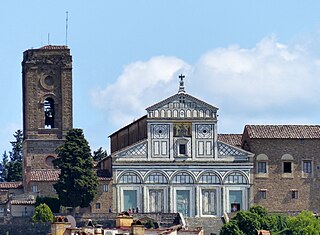
San Miniato al Monte is a basilica in Florence, central Italy, standing atop one of the highest points in the city. It has been described as one of the finest Romanesque structures in Tuscany and one of the most scenic churches in Italy. There is an adjoining Olivetan monastery, seen to the right of the basilica when ascending the stairs.
22. Cappella de' Pazzi
The Pazzi Chapel is a chapel located in the "first cloister" on the southern flank of the Basilica di Santa Croce in Florence, Italy. Commonly credited to Filippo Brunelleschi, it is considered to be one of the masterpieces of Renaissance architecture.
23. Basilica di San Marco
St. Mark's Basilica in Florence is one of the churches in the historic city center, dominating a crowded square and acting as a reference point for the surrounding urban area. The church was originally part of the large complex of the convent of San Marco, in which many of the most important representatives of fifteenth-century spirituality and culture lived and worked: Cosimo the Elder, St. Antoninus, Fra Angelico, Ambrogio Catarino Politi, Fra Bartolomeo, Tommaso Caccini and, above all, Fra' Girolamo Savonarola, who preached against the decadence of morals, ending up hanged and burned in Piazza della Signoria in 1498. From 1934 the mayor of Florence Giorgio La Pira also lived there, later buried in the Basilica.
24. Basilica della Santissima Annunziata
The Basilica della Santissima Annunziata is a Renaissance-style, Catholic minor basilica in Florence, region of Tuscany, Italy. This is considered the mother church of the Servite Order. It is located at the northeastern side of the Piazza Santissima Annunziata near the city center.
25. Sinagoga di Firenze
The Great Synagogue of Florence is an Orthodox Jewish congregation and synagogue, that is located at Via Luigi Carlo Farini 4, in Florence, in Tuscany, Italy. Designed in the Italian and Moorish Revival styles, the synagogue was completed in 1882.
26. Chiesa di Nostra Signora del Sacro Cuore
The church of Our Lady of the Sacred Heart, born with the title of Santa Maria della Concezione, is a Catholic place of worship in Florence, located in Piazza Santa Caterina d'Alessandria and on the corner with Via Enrico Poggi, in the historic center of the Tuscan capital.
Wikipedia: Chiesa di Nostra Signora del Sacro Cuore (Firenze) (IT)
27. Museo Galileo - Istituto e Museo di Storia della Scienza
Museo Galileo is located in Florence, Italy, in Piazza dei Giudici, along the River Arno and close to the Uffizi Gallery. The museum, dedicated to astronomer and scientist Galileo Galilei, is housed in Palazzo Castellani, an 11th-century building which was then known as the Castello d'Altafronte.
28. Palazzo Pandolfini
Palazzo Pandolfini is one of the most beautiful buildings of the late Renaissance in Florence and is located in Via San Gallo 74, overlooking Via Salvestrina and the entrance to the garden on Via Cavour 79.
29. Piazza D'Azeglio
Piazza Massimo d'Azeglio is a large, rectangular tree-lined square in the historic center of Florence. Not far from the avenues of Circonvallazione, numerous streets lead to it: via Alfieri, via Farini, via Giusti, via della Colonna, via Carducci, via Niccolini, via Giordani and via Silvio Pellico.
30. Badia Fiorentina
The Badìa Fiorentina is an abbey and church now home to the Monastic Communities of Jerusalem situated on the Via del Proconsolo in the centre of Florence, Italy. Dante supposedly grew up across the street in what is now called the 'Casa di Dante', rebuilt in 1910 as a museum to Dante. He would have heard the monks singing the Mass and the Offices here in Latin Gregorian chant, as he famously recounts in his Commedia: "Florence, within her ancient walls embraced, Whence nones and terce still ring to all the town, Abode aforetime, peaceful, temperate, chaste." In 1373, Boccaccio delivered his famous lectures on Dante's Divine Comedy in the subsidiary chapel of Santo Stefano, just next to the north entrance of the Badia's church.
31. Basilica di Santa Trinita
Santa Trinita is a Roman Catholic church located in front of the piazza of the same name, traversed by Via de' Tornabuoni, in central Florence, Tuscany, Italy. It is the mother church of the Vallumbrosan Order of Monks, founded in 1092 by a Florentine nobleman. South on Via de' Tornabuoni is the Ponte Santa Trinita over the river Arno; across the street is the Palazzo Spini Feroni.
32. La Specola
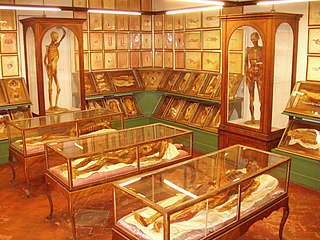
The Museum of Zoology and Natural History, best known as La Specola, is an eclectic natural history museum in Florence, central Italy, located next to the Pitti Palace. The name Specola means observatory, a reference to the astronomical observatory founded there in 1790. It now forms part of the Museo di Storia Naturale di Firenze. This museum is part of what are now six different collections at four different sites for the Museo di Storia Naturale di Firenze.
33. Fontana del Nettuno
The Fountain of Neptune in Florence, Italy, is situated in the Piazza della Signoria, in front of the Palazzo Vecchio. The fountain was commissioned by Cosimo I de' Medici in 1559 to celebrate the marriage of Francesco de' Medici I to Grand Duchess Joanna of Austria. Cosimo I de' Medici was the Duke of Florence from 1537-1569 and responsible for a vast number of architectural and artistic elements in Florence that still exist today.
34. Teatro di Cestello
The Teatro di Cestello is located in the square of the same name in Cestello, from which it takes its name, in the district of San Frediano, in the Oltrarno area, in the historic center, in Florence. It is the only room in the neighborhood with a regular schedule, as well as being a training center. It is considered one of the main Florentine theaters in operation.
35. Orti Oricellari
The Orti Oricellari are a monumental garden in the street of the same name near Santa Maria Novella, in Florence. It was the garden of what is now called Palazzo Venturi Ginori, and belonged to the Rucellai family, of which "Oricellari" is a variant of the family name.
36. Villa La Quiete
Villa La Quiete is located on the hill of Castello in Florence, at the foot of Monte Morello. Considered one of the most significant buildings in the surroundings of Florence, it owes its name to a fresco by Giovanni da San Giovanni entitled La Quiete che domina i venti (1632).
37. Basilica di Santa Maria del Carmine
Santa Maria del Carmine is a church of the Carmelite Order, in the Oltrarno district of Florence, in Tuscany, Italy. It is famous as the location of the Brancacci Chapel housing outstanding Renaissance frescoes by Masaccio and Masolino da Panicale, later finished by Filippino Lippi.
38. Chiesa di San Giovanni Battista della Calza
The church of San Giovanni Battista della Calza is a Catholic place of worship that is part of the Calza complex, founded in 1362 as the hospital of San Giovanni Battista, and is located in Piazza della Calza 6, opposite Porta Romana, in the Oltrarno district in the historic center of Florence.
39. Firenze Porta al Prato
The Florence Porta al Prato station was a railway stop at the head of Florence, equipped with a central metropolitan platform. Without rail traffic since September 2022 and suppressed in February 2024, the management of circulation fell under the scope of the Florence Cascine Movement Post of the Leopolda railway from which the connecting branch was born.
40. Giardino Torrigiani
The Torrigiani garden is located in Florence between Via de' Serragli, Via del Campuccio and the stretch of wall that runs along Viale Francesco Petrarca. It is a large park with a palace called Casino Torrigiani al Campuccio.
41. Porta al Prato
Porta al Prato is one of the ancient city gates of the Walls of Florence. It is now located in the center of the square of the same name in Porta al Prato, along the busy route of the ring roads, at the convergence of Viale Fratelli Rosselli, Via del Ponte alle Mosse, Viale Belfiore and Prato di Ognissanti.
42. Chiesa di Santa Felicita
Santa Felicita is a Roman Catholic church in Florence, region of Tuscany, Italy, probably the oldest in the city after San Lorenzo. In the 2nd century, Syrian Greek merchants settled in the area south of the Arno and are thought to have brought Christianity to the region. The first church on the site was probably built in the late 4th century or early 5th century and was dedicated to Saint Felicity of Rome. A new church was built in the 11th century and the current church largely dates from 1736–1739, under design by Ferdinando Ruggieri, who turned it into a one nave edifice. The monastery was suppressed under the Napoleonic occupation of 1808–1810.
43. Galleria dell'Accademia
The Galleria dell'Accademia di Firenze, or "Gallery of the Academy of Florence", is an art museum in Florence, Italy. It is best known as the home of Michelangelo's sculpture David. It also has other sculptures by Michelangelo and a large collection of paintings by Florentine artists, mostly from the period 1300–1600. It is smaller and more specialized than the Uffizi, the main art museum in Florence. It adjoins the Accademia di Belle Arti or academy of fine arts of Florence, but despite the name has no other connection with it.
44. Cenacolo di Fuligno
The Last Supper of Fuligno is a museum in Florence, dedicated to the great Last Supper by Pietro Perugino, in the refectory of the former monastery of Sant'Onofrio, also known as the monastery of the nuns of Foligno.
45. Oratorio dei Buonomini di San Martino
The Oratory of the Buonomini di San Martino is a Catholic place of worship in the center of Florence located in the small square of the same name in San Martino, at the end of Via de' Magazzini, at the corner of Via Dante Alighieri, located in front of the Chestnut Tower.
46. Chiesa di San Basilio degli Armeni
The former Methodist Episcopal Church, now the Seventh-day Adventist Church, is a religious building in Florence, Italy, located on the corner of Via San Gallo and Via Guelfa. It was originally called the church of San Basilio, also known as the church of the Armenians.
47. Giardino Corsini
The Corsini al Prato garden is part of the complex of the Corsini al Prato palace, to be distinguished from the Corsini palace on the Lungarno, which belonged to the wealthy Corsini family in Florence. Numerous and illustrious guests have been the guests of the palace, from Frederick IV of Denmark to the Prince of Wales, Charles Edward Stuart to the queens Victoria of England and Margaret of Savoy.
48. Pegaso
The flag of Tuscany is the official flag of the region of Tuscany, Italy. The flag depicts a silver Pegasus rampant on a white field between two horizontal red bands. The flag first appeared as a gonfalon on 20 May 1975 along with accompanying text Regione Toscana above the Pegasus. It was officially adopted as the flag of Tuscany on 3 February 1995.
49. Piazza della Vittoria
Piazza della Vittoria is located in Florence and is the converging street of Via Fratelli Ruffini, Via Francesco Puccinotti, Via della Cernaia and Via Giuseppe Cesare Abba. In recent times the square is a meeting point for young people and children of the neighborhood, as well as students of the area. Piazza della Vittoria is embellished with forty-five pine trees that give it the appearance of a garden. In this square, there is the building of the Dante Gymnasium High School, a work in Coppedè style and, in Via della Cernaia, the Maria Teresa nursing home overlooking the square.
50. Chiesa dei Santi Gervasio e Protasio
The church of Saints Gervasio and Protasio is a Catholic place of worship located in the area north of the center of Florence, in the square of the same name transformed into a public garden in the early 1990s.
Wikipedia: Chiesa dei Santi Gervasio e Protasio (Firenze) (IT)
51. Palazzo Incontri
Palazzo Incontri, also known as Incontri Piccolellis, is a palace in Florence located on the corner of Via dei Servi 3-5 and Via dei Pucci 1, at an intersection where on the other sides overlook Palazzo Pucci, Palazzo Pasqui and the church of San Michelino Visdomini.
52. Chiesa di Santa Maria al Pignone
The church of Santa Maria al Pignone is a Catholic place of worship in Florence located in the square of the same name, between Via Felice Cavallotti and Via della Fonderia, and today represents one of the few meeting spaces in the Florentine district of the same name of Pignone, located west of San Frediano in the Oltrarno area. The name of the suburb derives from an ancient wall structure for the mooring of boats that traveled along the Arno, called "pine cone".
53. Chiesa di Santa Maria in Campo
The church of Santa Maria in Campo, "speciosa in campis" as you can read on the architrave, is a Catholic place of worship that stands on a side square of Via del Proconsolo that opens shortly after the beginning of the street a few steps from Piazza del Duomo in Florence. But although it is in a very central position, it does not belong to the Florentine diocese, but to that of Fiesole.
54. Casa Buonarroti
Casa Buonarroti is a museum in Florence, Italy that is situated on property owned by the sculptor Michelangelo that he left to his nephew, Leonardo Buonarroti. The complex of buildings was converted into a museum dedicated to the artist by his great nephew, Michelangelo Buonarroti the Younger. Its collections include two of Michelangelo's earliest marble sculptures, the Madonna of the Stairs and the Battle of the Centaurs. A ten-thousand book library includes the family archive and some of Michelangelo's letters and drawings. The Galleria is decorated with paintings commissioned by Buonarroti the Younger and was created by Artemisia Gentileschi and other early seventeenth-century Italian artists.
55. Casa Guidi
Casa Guidi is a writer's house museum in the 15th-century patrician house in Piazza San Felice, 8, near the south end of the Pitti Palace in Florence, Italy. The piano nobile apartment was inhabited by Robert and Elizabeth Barrett Browning between 1847 and Mrs Browning's death in 1861. Their only child, Robert Barrett Browning, was born there in 1849.
56. Menelaus supporting the body of Patroclus
The Pasquino Group is a group of marble sculptures that copy a Hellenistic bronze original, dating to ca. 200–150 BCE. At least fifteen Roman marble copies of this sculpture are known. Many of these marble copies have complex artistic and social histories that illustrate the degree to which improvisatory "restorations" were made to fragments of ancient Roman sculpture during the 16th and 17th centuries, in which contemporary Italian sculptors made original and often arbitrary and destructive additions in an effort to replace lost fragments of the ancient sculptures.
57. Chiesa Immacolata Concezione
The Church of the Immaculate Conception is a Catholic place of worship in Florence, with the main entrance in Via Paoletti and another entrance in Via Fabroni; the church of San Martino a Montughi, located in via Stibbert, is joined to it, which, before the construction of the Immaculate Conception, was the parish of the area.
58. Chiesa dei Santi Girolamo e Francesco alla Costa
The church of Saints Jerome and Francis alla Costa is a Catholic place of worship located along the steep San Giorgio coast, a street that climbs to the Belvedere fort from the Ponte Vecchio in the center of Florence.
Wikipedia: Chiesa dei Santi Girolamo e Francesco alla Costa (IT)
59. Palazzo dei Congressi
The Palazzo dei Congressi is a building in Florence located near the Santa Maria Novella railway station. Born as Villino Strozzi on the initiative of the Strozzi family 'of Mantua', the villa is also known as Villa Vittoria when Alessandro Contini Bonacossi took over the property in 1931. It was purchased in 1964 by the Florentine autonomous tourist board and destined for current use through extensions by Enzo Vannucci and Pierluigi Spadolini.
60. Chiesa della Sacra Famiglia
The Church of the Holy Family is a Catholic place of worship located in Via Gioberti, Florence; the parish of the same name, belonging to the archdiocese of Florence and entrusted to the priests of the Salesian Society of St. John Bosco, insists on it.
61. Parco delle Cascine
The Parco delle Cascine (Cascine Park) is a monumental and historical park in the city of Florence. The park covers an area of 160 hectares. It has the shape of a long and narrow stripe, on the north bank of the Arno river. It extends from the centre of Florence until the point where the Mugnone flows into the Arno.
62. San Michele a Castello
The church of San Michele a Castello is a Catholic place of worship located in Florence in the homonymous Via di San Michele in the Castello area, a hill north of the city famous for the beautiful villas that were built there by the Medici and other Florentine families.
63. San Marcellino
The church of San Marcellino, also known as San Marcellino al Paradiso, is a Catholic place of worship located in the street of the same name in the south-east area of the Municipality of Florence in the Gavinana district towards Bagno a Ripoli.
64. Palazzo Ricci-Altoviti
The Ricci-Altoviti Palace is a historic building in the historic center of Florence, located in Via de' Vecchietti 6, at the corner of Via del Campidoglio. It incorporates the ancient tower of the Agli, still visible on the left side.
65. Tabernacolo delle Fonticine
The tabernacle of the Fonticine is one of the most beautiful tabernacles in Florence. Consisting of a large Della Robbia altarpiece and also equipped with a basin with fountains, it is located in Via Nazionale, on the axis of Via dell'Ariento, a few steps from the San Lorenzo market.
66. Chiesa di Maria Mater Misericordiae
The church of Maria Mater Misericordiae is a Catholic place of worship located in Via Villani in Florence. The former adjoining convent, now home to artisan workshops, is called the Conventino, with access from Via Giano della Bella. It shares this name with another complex not far away, the former convent of St. Francis de Sales in Piazza Tasso, seat of the Theological Faculty of Central Italy.
67. Chiesa Evangelica Valdese di Firenze (Holy Trinity Church)
The Waldensian church of Florence is located in Via Pier Antonio Micheli on the corner with Via Alfonso La Marmora. It was an Anglican place of worship with the title of Holy Trinity Church from its construction until 1966.
68. Ex ospizio di Orbatello
The Orbatello Hospice is a building in Florence where the Art History Library of the University of Florence is located; previously, since its foundation in the fourteenth century, it was a place of welcome for women in difficulty.
69. Chiesa di Santa Lucia
The church of Santa Lucia is a place of Christian worship located in Via del Podestà, in the hamlet of Galluzzo in Florence; Founded as a Catholic Church and still regularly officiated as such, it has also been the seat of the Romanian Orthodox parish of the same name since November 2015.
70. Rape of the Sabine Women
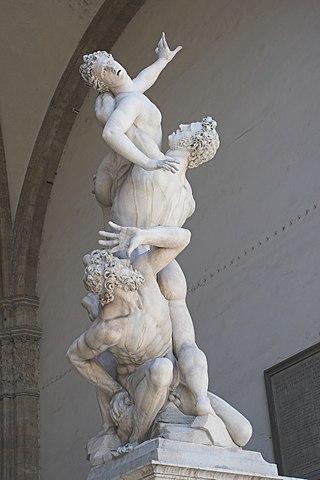
Abduction of a Sabine Woman is a large and complex marble statue by the Flemish sculptor and architect Giambologna. It was completed between 1579 and 1583 for Cosimo I de' Medici. Giambologna achieved widespread fame in his lifetime, and this work is widely considered his masterpiece. It has been in the Loggia dei Lanzi, Florence, since August 1582.
71. San Giorgio di Donatello
Saint George is a marble sculpture by Donatello. It is one of fourteen sculptures commissioned by the guilds of Florence to decorate the external niches of the Orsanmichele church. St. George was commissioned by the guild of the armorers and sword makers, the Arte dei Corazzai e Spadai.
72. Museo diocesano di Santo Stefano al Ponte
The diocesan museum of sacred art, housed in the premises of the rectory and the spaces adjacent to the church of Santo Stefano al Ponte, was the diocesan museum of Florence. The collection consisted of works from Florentine churches, removed in the second half of the twentieth century for conservation and safety reasons.
73. Chiesa del Sacro Cuore al Romito
The church of the Sacred Heart at Romito is a Catholic place of worship located in Piazza Baldinucci in Florence in the Romito area. Together with the church, the structure housed a community of Capuchin Friars Minor until the end of the nineties of the last century, after which the convent was closed and returned to the diocese of Florence.
74. Chiesa del Santissimo Sacramento e del Preziosissimo Sangue
The "church of the Blessed Sacrament and of the Precious Blood" or "church of the Suffrage" is a place of Catholic worship in Florence, located just beyond the western border of the walls, in Via Colletta.
75. Teatro di Rifredi
The Rifredi Theatre is a theatre in Florence. It hosts works of prose, research and theatrical experimentation. For some years now, it has been addressing more specific educational support projects to schools in the city.
76. Villa Agape-Arrighetti
Villa Agape, previously named Villa Arrighetti, is a villa in Tuscany, Italy, situated in Florence on the hill of Arcetri, close to Piazzale Michelangelo. The original house was built in 1472, but was rebuilt in its present form by Giulio de Filippo Arrighetti in 1602. Arrighetti was friends with the scientist Galileo, who retired to Arcetri, effectively under house arrest after the condemnation of his theories. A plaque on the wall commemorates their friendship.
77. Chiesa di San Felice in Piazza
The Chiesa di San Felice is a Roman Catholic church in Florence, region of Tuscany, Italy. It is located on the south bank of the River Arno, just west of the Pitti Palace. It is predominantly Gothic, but has a Renaissance façade by Michelozzo, added in 1457. Over the high altar is a large Crucifix attributed to Giotto or his school.
78. Teatro Comunale
The Teatro Comunale di Firenze is an opera house in Florence, Italy. It was originally built as the open-air amphitheatre, the Politeama Fiorentino Vittorio Emanuele, which was inaugurated on 17 May 1862 with a production of Donizetti's Lucia di Lammermoor and which seated 6,000 people. It became the focus on cultural life in the city. After closure caused by fire, it reopened in April 1864 and acquired a roof in 1882. By 1911 it had both electricity and heating.
79. Villa Il Gioiello
Villa il Gioiello is a villa in Florence, central Italy, famous for being one of the residences of Galileo Galilei, which he lived in from 1631 until his death in 1642. It is also known as Villa Galileo.
80. Villa Bardini
Villa Bardini, formerly Villa Manadora, is located on the San Giorgio 2 coast in Florence. Today it is an exhibition center that hosts temporary exhibitions and the Annigoni Museum; until 2017 it also housed the Capucci Museum. The park of the villa is the scenic Bardini garden, which can now be visited separately with the same ticket as the Boboli Gardens. In addition, the "Bardinicontemporanea" space offers contemporary art exhibitions with free admission.
81. Statua Dante Alighieri
The Statue of Dante Alighieri is a monument to Dante Alighieri in Piazza Santa Croce, outside the Basilica of Santa Croce, in Florence, Italy. Erected in 1865, it is the work of the sculptor Enrico Pazzi.
82. Parco D'Arte Enzo Pazzagli
The Enzo Pazzagli Art Park is a large garden in Florence decorated with sculptures and installations by the artist Enzo Pazzagli. It is located in via Sant'Andrea a Rovezzano 5, between the Arno river and the direct railway to Rome.
83. Fontana dell'Uomo della pioggia
The fountain of the Rain Man was installed in Florence, in the center of a roundabout between Lungarno Aldo Moro and Viale Enrico de' Nicola, near the Varlungo bridge. It was composed of the statue Pluie ("rain") by Belgian artist Jean Michel Folon and the surrounding structures for the fountain's operation and lighting.
84. Casa Vasari
The Casa Vasari is a building at 8 borgo Santa Croce in Florence, previously the residence in that city of the painter, art historian and architect Giorgio Vasari. It preserves a valuable cycle of frescoes in the hall, conceived and created by Vasari with the help of pupils.
85. Giardino dell'Ardiglione
The Nidiaci-Ardiglione garden is a garden and space for children in the city of Florence, located in the district of San Frediano, in the Florentine Oltrarno, behind the basilica of Santa Maria del Carmine. The historic entrance to the complex was from Via della Chiesa, but the garden is accessible only from a gate in Via d'Ardiglione.
86. Santa Margherita dei Cerchi

The Chiesa di Santa Margherita de' Cerchi is a 13th-century, Roman Catholic church dedicated to Margaret the Virgin in the centre of Florence, region of Tuscany, Italy. It is among the oldest churches in Florence.
87. Chiostro dello Scalzo
The Chiostro della Scalzo or is a cloister in Florence, Italy that originally led to a chapel once belonging to a religious company known as the Compagnia del diciplinati di San Giovanni Battista or della Passione di Cristo. The term "scalzo" makes reference to the barefoot brother who carried the Cross during its public processions.
88. Obelisco
The Boboli obelisk, previously called the Obelisco Mediceo, is an ancient Egyptian granite obelisk, which was moved in the 18th century from Rome to Florence, where it was erected in the Boboli Gardens.
89. Chiesa di Santo Stefano al Ponte
Santo Stefano al Ponte is a Romanesque-style, Roman Catholic church, located in the Piazza of the same name, just off the Via Por Santa Maria, near the Ponte Vecchio, in Florence, region of Tuscany, Italy. The church is presently used as a concert hall.
90. Piccola Casa della Divina Provvidenza di San Giuseppe Benedetto Cottolengo
The Little House of Divine Providence in Florence is located in Via dei Cappuccini 6A and is one of the many houses in Italy of the Little House of Divine Providence in Turin managed by the Sisters of St. Joseph Benedict Cottolengo.
Wikipedia: Piccola Casa della Divina Provvidenza (Firenze) (IT)
91. Statua equestre di Ferdinando I
The Equestrian Monument of Ferdinando I is a bronze equestrian statue by Giambologna, executed in 1602–1607, and erected in 1608 in the Piazza of the Annunziata in Florence, region of Tuscany, Italy.
92. Villa Donatello
Villa Donatello is a building built around 1870 on the Viali di Circonvallazione in Florence as the Florentine residence of the Rospigliosi princes. Until 2018 it hosted the activities of a private medical-health facility of the same name.
93. Chiesa russa ortodossa della Natività
Church of the Nativity of Christ and St. Nicholas the Wonderworker is a Russian Orthodox church in Florence, located on via Leone X, near the Basso Fortress. Its style is a late 19th and early 20th century imitation of the earlier Naryshkin Baroque.
Wikipedia: Church of the Nativity of Christ and St. Nicholas (Florence) (EN)
94. Villino Galeotti-Flori
The Galeotti-Flori villa, later Toccafondi, is located in via XX Settembre 72 in Florence. The building is located at the beginning of the Statuto district near the Fortezza da Basso and not far from Piazza della Libertà, in a predominantly residential area, built at the turn of the nineteenth and twentieth centuries along the Mugnone stream.
95. Monumento all'Indiano
The Monumento all'Indiano or Monument to the Indian, more specifically "Monument to the Maratha Maharajah of Kolhapur, Rajaram Chhatrapati" consisting of a chhatri or small raised dome, in Italian terms a baldacchino, over the bust of the Indian prince, at the west end of the Parco delle Cascine in Florence, Tuscany, Italy.
96. Monumento a Garibaldi
The Monument to Giuseppe Garibaldi is a celebratory sculpture of Florence, located on the Lungarno Amerigo Vespucci in the widening between Villa Favard and Palazzo Calcagnini Arese. In bronze, cast in 1890 by the sculptor Cesare Zocchi, placed on a high stone pedestal.
97. Chiesa di Santa Elisabetta delle Convertite
Santa Elisabetta delle Convertite is a formerly Roman Catholic church on Via de' Serragli in the Oltrarno neighborhood of Florence region of Tuscany, Italy. Since 2015, the church has functioned as a Georgian Orthodox church. The former adjacent convent has multiple uses, including in 2016 as the Istituti Pio X Artigianelli.
98. Fontana di piazza Santa Croce
The fountain in Piazza Santa Croce in Florence is located on the opposite side of the basilica of Santa Croce, along the axis of Via de' Benci and Via Giuseppe Verdi and in front of the Cocchi Serristori palace.
99. Arco di Trionfo
The Triumphal Arch of the Lorraine located in Piazza della Libertà in Florence, Italy, is an 18th-century, monumental triumphal arch, bypassed by the viali di Circonvallazione that skirt Florence through the space once girded by its 16th-century walls. The piazza stands at the northernmost end of Via Cavour, Florence, region of Tuscany, Italy.
100. Chiesa di San Giorgio alla Costa
The church of San Giorgio alla Costa, called in earlier times also dei Santi Giorgio e Massimiliano dello Spirito Santo is a small historical church in the Oltrarno district of the centre of Florence, situated on the steep slope of via Costa San Giorgio which runs uphill from Ponte Vecchio to Forte di Belvedere.
Share
How likely are you to recommend us?
Disclaimer Please be aware of your surroundings and do not enter private property. We are not liable for any damages that occur during the tours.
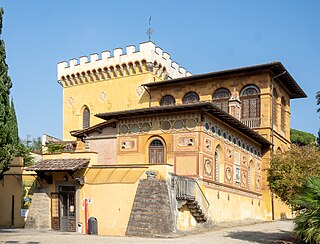
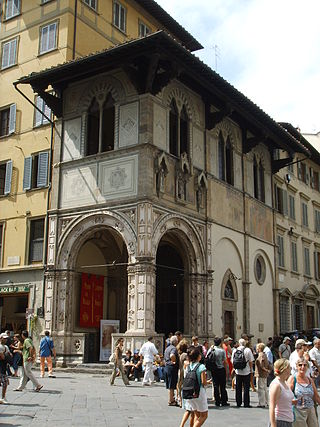
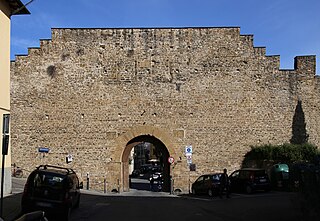
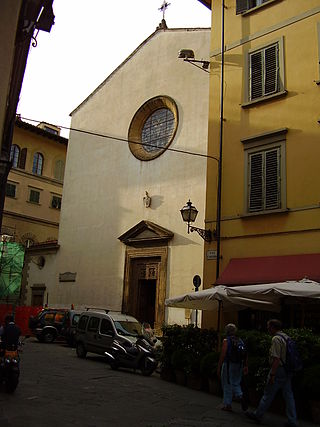
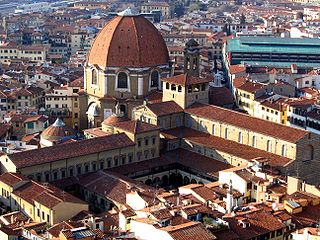
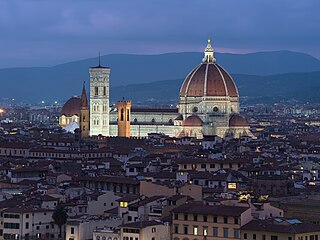
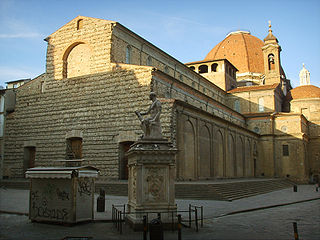
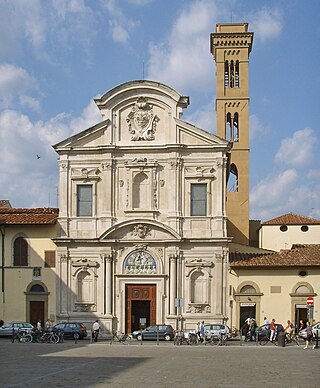
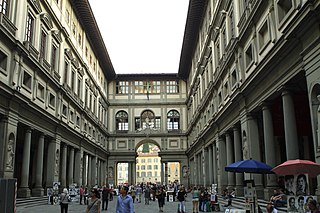
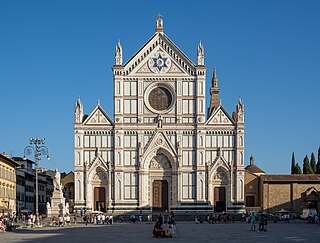
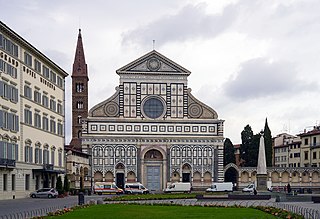
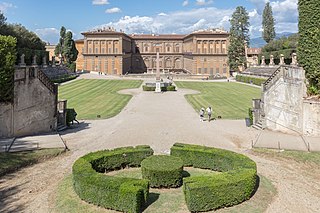
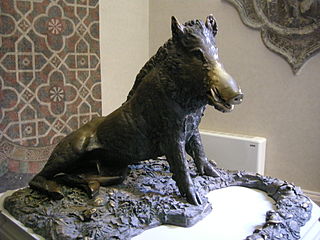
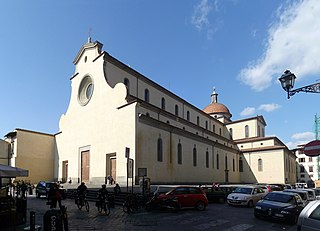
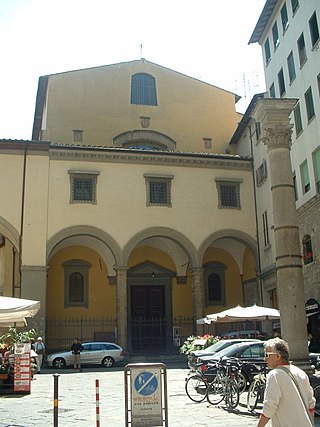
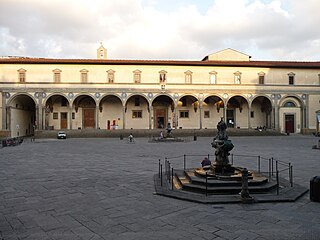
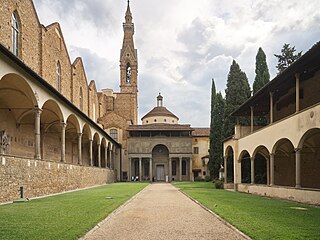
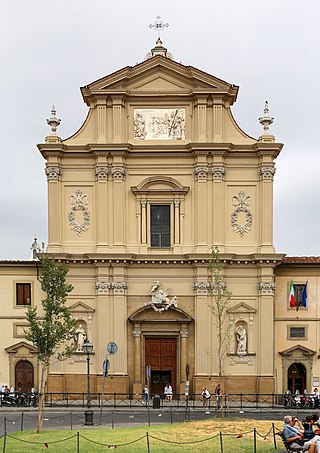
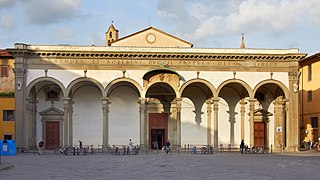
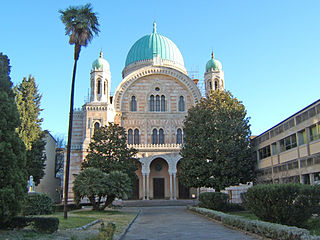
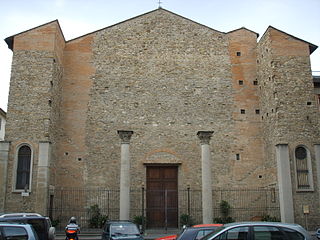
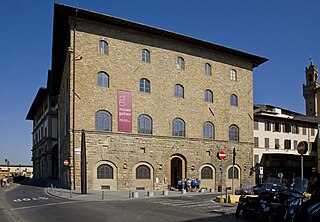
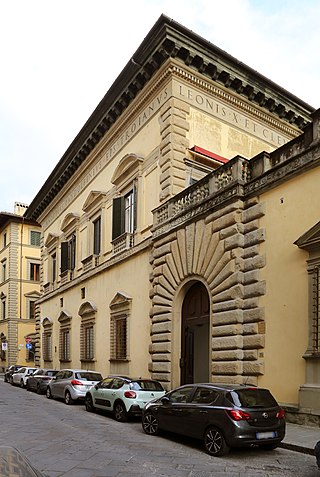
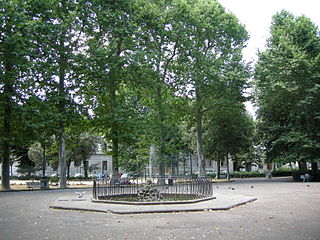
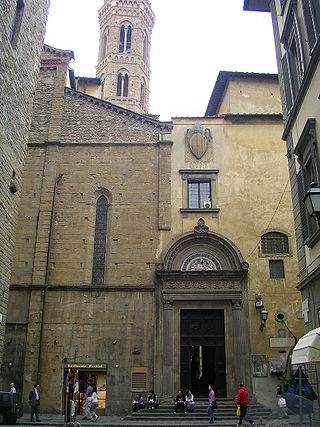
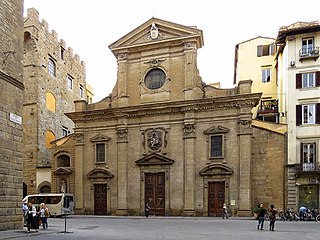
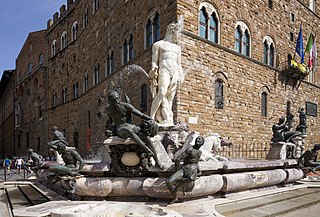
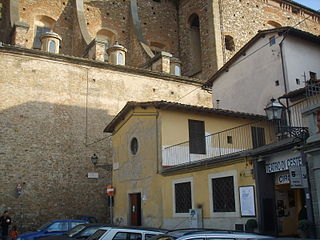
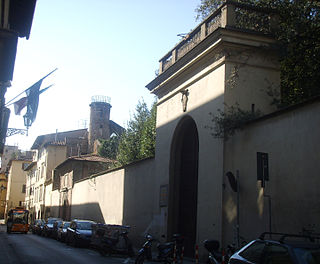
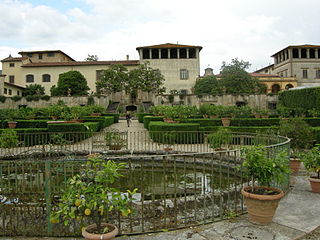
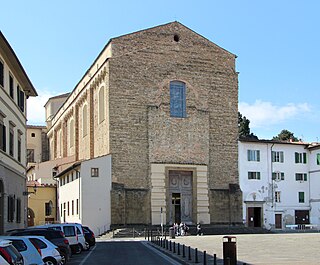
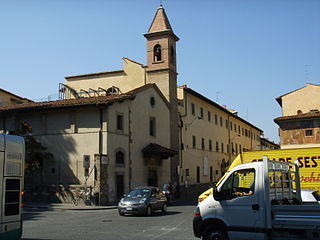
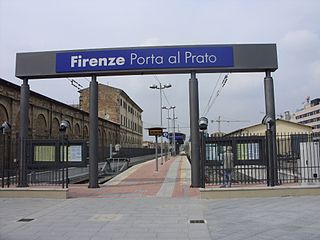
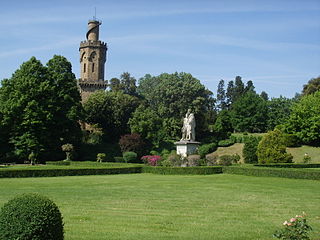
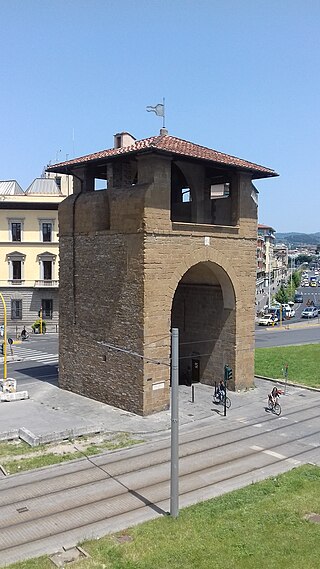
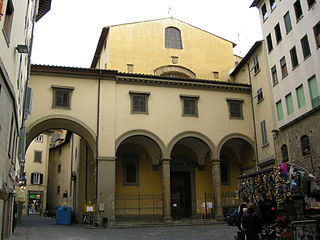
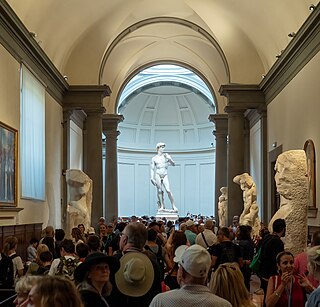
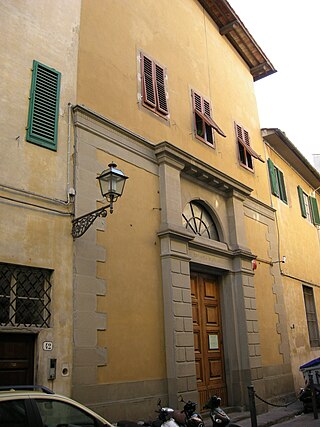
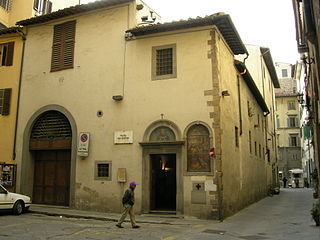
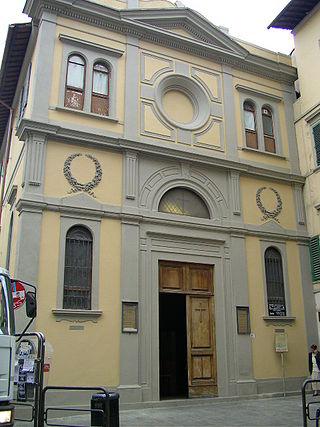
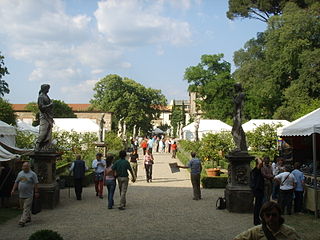
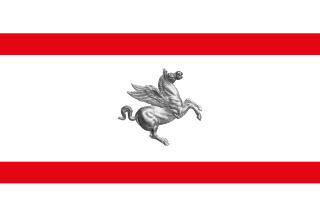
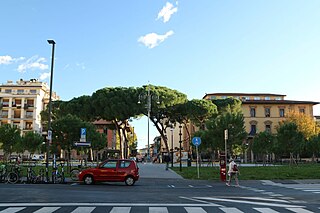
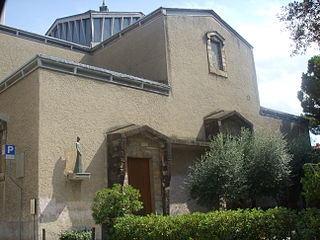
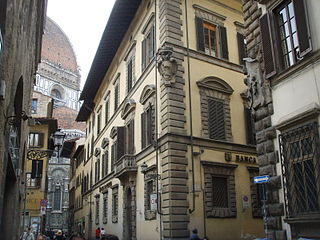
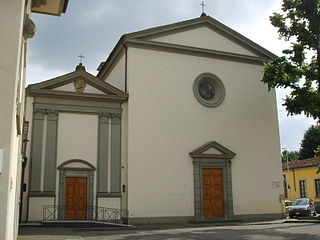
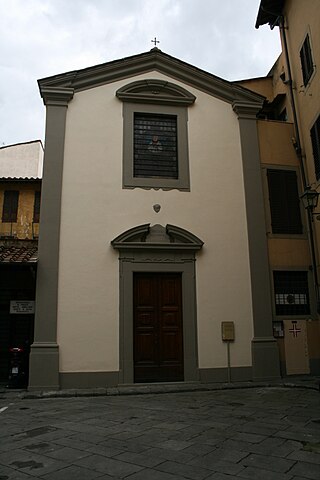
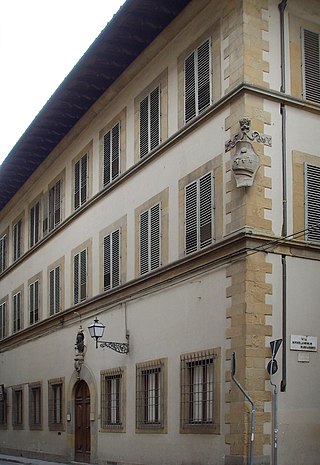
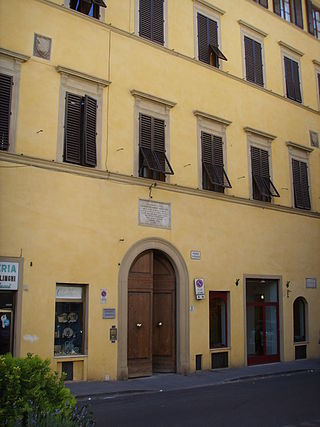
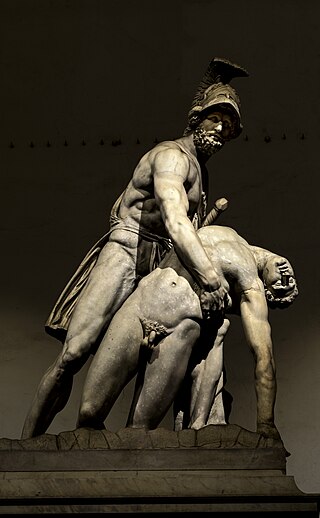
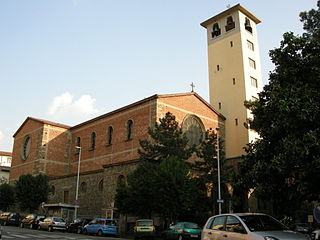
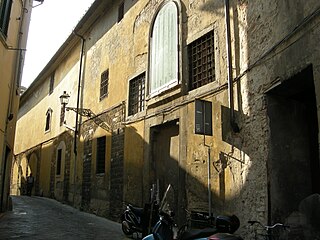
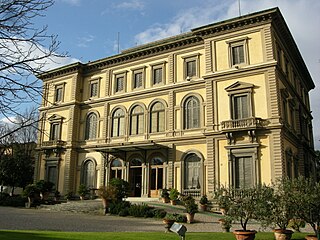
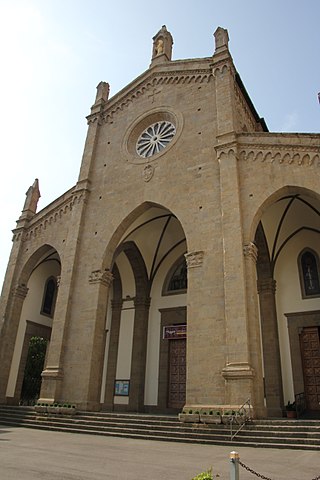
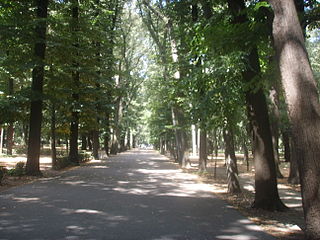
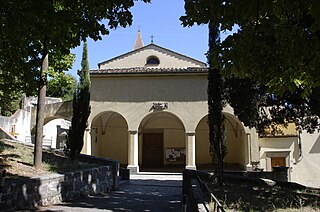

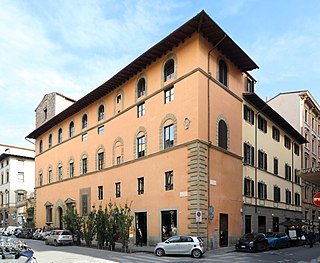

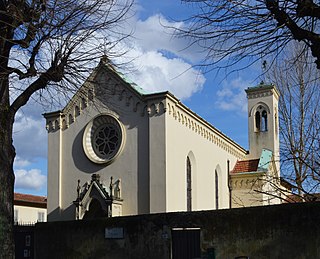
.jpg)

